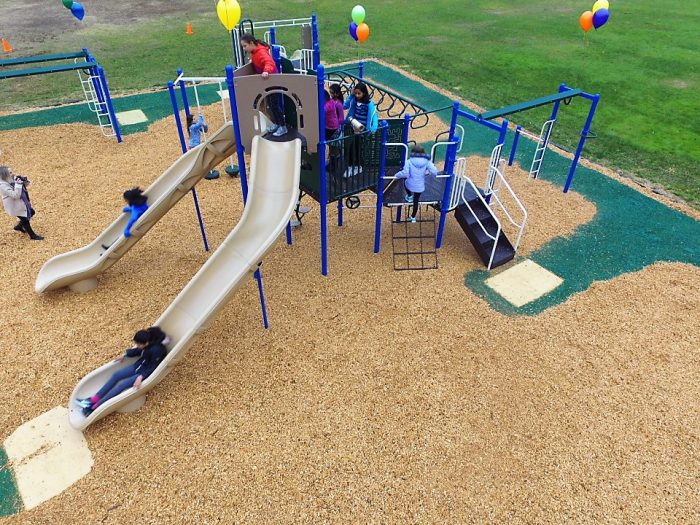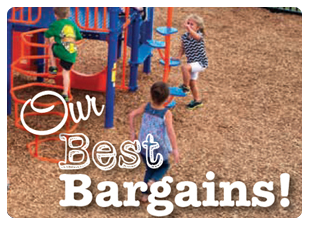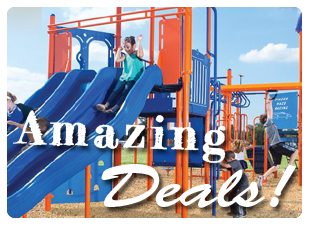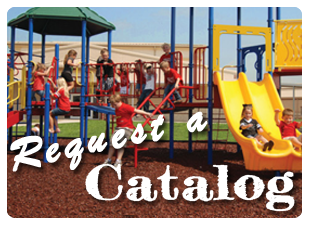
When it comes to building or upgrading a playground, the focus is often on colorful slides, creative climbing structures, and interactive play panels. But there’s one part of the playground that’s just as important, if not more so, and that’s the surface. Playground safety surfacing does more than just cushion falls. It also plays a crucial role in ensuring your space is inclusive and accessible to all children.
If you’re designing a play area for a school, park, or early childhood center, it’s essential to understand the ADA requirements for playground surfacing. These guidelines help you stay compliant with the law and ensure that every child has the chance to play safely and confidently.
What Is ADA Compliance in Playground Surfacing?
ADA stands for the Americans with Disabilities Act. This law makes sure that people with disabilities have equal access to public spaces, including playgrounds. For surfacing, ADA compliance ensures that children using wheelchairs, walkers, or other mobility devices can move freely and safely throughout the play area.
The surfacing must be firm, stable, and slip-resistant. It should allow kids and caregivers with mobility challenges to navigate the entire space, from the entrance to each piece of equipment, without getting stuck or feeling unsafe.
Key ADA Requirements for Surfacing
The ADA collaborates with ASTM (American Society for Testing and Materials) standards to establish clear expectations for what constitutes accessible surfacing. Here are some of the key things your surfacing needs to meet:
Firm and Stable
The surface should not shift underfoot or under wheels. It should support mobility aids without sinking in, which is why loose materials must be carefully maintained and compacted.
Slip Resistant
The surface should offer traction in both dry and wet conditions to reduce the risk of slipping.

Accessible Routes
There must be clear, continuous routes throughout the play space that connect accessible equipment. These routes must meet width and slope requirements and offer smooth transitions between surfacing types. You can find the full ADA guidelines for playground surfacing and routes in the U.S. Access Board’s official guide.
Meets ASTM F1951
This is the standard test for surface accessibility. It determines whether a material can be navigated by wheelchairs and mobility devices. If a surface passes this test, it’s considered accessible.
What Surfacing Options Are ADA Compliant?
Several types of playground surfacing can meet ADA standards when installed correctly. Here’s a look at the most common options used today:
Poured-in-Place Rubber (PIP)
This seamless, two-layer rubber surface is poured and cured onsite. It creates a smooth, even surface that’s perfect for wheelchairs and walkers. It also allows for bright colors, custom graphics, and game zones. PIP is a top choice for inclusive playgrounds and is especially recommended for toddlers because it reduces trip hazards.
Rubber Tiles or Mats
Pre-formed tiles made of rubber can be laid over a firm sub-base like concrete or asphalt. They create a stable, cushioned surface and are easy to repair if one section gets damaged. Tiles are ideal for rooftop playgrounds or areas where access to utilities beneath the surface may be required.
Artificial Turf
Modern turf systems with padded underlayers can meet both impact and accessibility standards. They offer a natural appearance, are low-maintenance, and feel soft underfoot. Artificial turf is well-suited for larger spaces or play areas that also serve as sports fields.

Engineered Wood Fiber (EWF)
When properly installed and compacted, EWF can be ADA compliant. It’s essential to use specially processed wood fiber — not regular mulch or wood chips — and to maintain the surface regularly. Over time, EWF breaks down and requires topping off to stay level and firm.
Loose Rubber
Some loose-fill rubber mulch systems can be ADA compliant, but they need careful installation and consistent upkeep. Displacement and uneven surfaces can become issues without routine raking and leveling.
Why ADA-Compliant Surfacing Matters
Making your playground accessible isn’t just about checking a legal box; it’s about creating a space where all children feel welcome. When the surface is accessible, kids with limited mobility can join in play with their peers, explore independently, and build physical and social skills just like everyone else.
Accessible surfacing also supports parents, grandparents, and caregivers with mobility limitations who want to be part of the experience. A compliant surface opens up the entire space, making it more usable and inviting for all visitors.
Common Mistakes to Avoid
Even well-meaning playground planners can miss the mark when it comes to ADA compliance. Here are a few things to watch for:
- Choosing loose-fill materials without a maintenance plan
- Using standard mulch or wood chips instead of engineered wood fiber
- Ignoring slope or drainage issues that affect surface stability
- Failing to connect all accessible play components with clear routes
- Overlooking long-term maintenance that keeps the surface usable
Maintaining ADA Compliance Over Time
ADA compliance isn’t a one-time thing. Surfacing needs to be maintained seasonally to stay firm, level, and accessible. Loose-fill materials like EWF and loose rubber should be checked and topped off regularly. Even unitary surfaces, such as PIP or turf, need inspections to spot cracks, wear, or drainage issues.
If your surfacing starts to wear down, it may be time to consider a replacement.
Partnering with the Right Playground Experts

At Kidstuff Playsystems, we specialize in IPEMA-certified, ADA-compliant surfacing that meets the needs of all children. Whether you’re working with poured rubber, turf, EWF, or tiles, our team can help you make the best choice for your playground.
Need help planning an inclusive, accessible play space?
Call us at (800)255-0153 or request a quote online. Let’s build a playground where every child can play safely and confidently!




Leave a Reply